S100A4
-
Official Full Name
S100 calcium binding protein A4 -
Overview
The protein encoded by this gene is a member of the S100 family of proteins containing 2 EF-hand calcium-binding motifs. S100 proteins are localized in the cytoplasm and/or nucleus of a wide range of cells, and involved in the regulation of a number of cellular processes such as cell cycle progression and differentiation. S100 genes include at least 13 members which are located as a cluster on chromosome 1q21. This protein may function in motility, invasion, and tubulin polymerization. Chromosomal rearrangements and altered expression of this gene have been implicated in tumor metastasis. Multiple alternatively spliced variants, encoding the same protein, have been identified. [provided by RefSeq, Jul 2008] -
Synonyms
S100A4;S100 calcium binding protein A4;42A;18A2;CAPL;FSP1;MTS1;P9KA;PEL98;protein S100-A4;protein Mts1;fibroblast-specific protein-1;placental calcium-binding protein;malignant transformation suppression 1;leukemia multidrug resistance associated protein;S100 calcium-binding protein A4 (calcium protein, calvasculin, metastasin, murine placental homolog)
Recombinant Proteins
- Human
- Mouse
- Cattle
- Rat
- E.coli
- HEK293
- Human Cells
- Mammalian Cells
- Mouse
- GST
- His
- Fc
- Avi
- Non
- Flag
- Myc
- SUMO
- DDK
Background

Fig1. Biological processes associated with S100A4. (Kjetil Boye, 2010)
What is S100A4 protein?
S100A4 (S100 calcium binding protein A4) gene is a protein coding gene which situated on the long arm of chromosome 1 at locus 1q21. The protein encoded by this gene is a member of the S100 family of proteins containing 2 EF-hand calcium-binding motifs. S100 proteins are localized in the cytoplasm and/or nucleus of a wide range of cells, and involved in the regulation of a number of cellular processes such as cell cycle progression and differentiation. The S100A4 protein is consisted of 101 amino acids and its molecular mass is approximately 11.7 kDa.
What is the function of S100A4 protein?
S100A4 protein is a secreted protein belonging to the S100 protein family. It is involved in a variety of cellular processes, such as cell growth, differentiation, apoptosis, inflammation and so on. In particular, the S100A4 protein plays an important role in the development and progression of tumors. It can promote the invasion and metastasis of tumor cells, inhibit the apoptosis of tumor cells, and participate in the regulation of tumor microenvironment.
S100A4 Related Signaling Pathway
The S100A4 protein, also known as Metastasin-1 or Mts1, It activates MAPK (mitogen-activated protein kinase), NF-κB (nuclear factor κB) and other signaling pathways by interacting with the Receptor for Advanced Glycation End products (RAGE), and affects a variety of cell functions. In addition, S100A4 affects the function of downstream effectors such as Calmodulin kinase, calmodulin, and calcium/calmodulin dependent protein kinase II (CaMKII) by regulating intracellular calcium ion concentration. It also interacts with actin and other cytoskeleton-associated proteins and is involved in cytoskeletal recombination and cell motility. S100A4 may also affect cell cycle regulation and apoptosis.
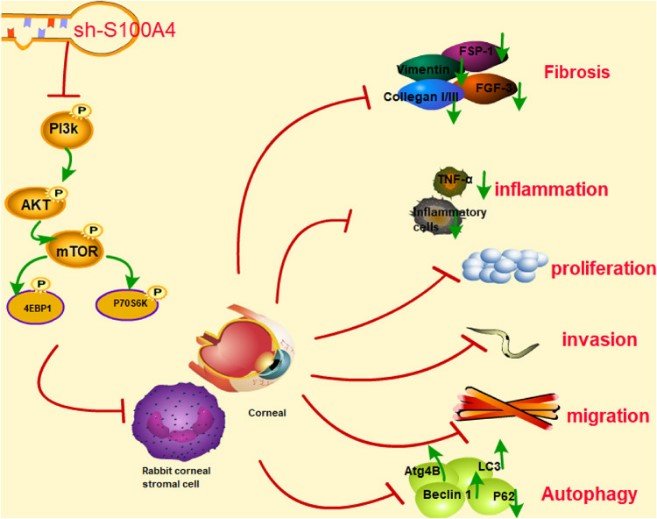
Fig2. Silencing of S100A4 downregulated the PI3K/Akt/mTOR pathway, enhanced autophagy, and promoted wound healing of rabbit cornea after alkali burn. (Yulin Wang, 2020)
S100A4 Related Diseases
S100A4 plays an important role in tumor invasion and metastasis and is considered to be a marker of malignant transformation and poor prognosis. In addition, S100A4 is also associated with a variety of diseases such as inflammatory diseases, bone diseases, cardiovascular diseases, and neurological diseases, and further affects the development and progression of diseases by participating in biological processes such as cell proliferation, migration, and apoptosis.
Bioapplications of S100A4
S100A4's role in promoting tumor growth and metastasis makes it a potential target for cancer therapy. The development of small molecule inhibitor or antibody drugs targeting S100A4 can help inhibit the proliferation and aggressiveness of cancer cells.
Case Study
Case study 1: Yana Qi, 2022
Metastasis is the major cause of cancer-related mortalities. A tumor-supportive microenvironment, also known as the premetastatic niche at secondary tumor sites, plays a crucial role in metastasis. Remodeling of the extracellular matrix (ECM) is essential for premetastatic niche formation, especially for circulating tumor cell colonization. However, the underlying molecular mechanism that contributes to this effect remains unclear. Here, the researchers developed a lung metastasis model with 4T1 breast cancer cells and found that the metastasis critically depended on the early recruitment of macrophages to the lung. Disruption of macrophage recruitment reduced fibroblast activation and lung metastasis. Furthermore, they identified the secreted protein S100A4, which is produced by M2 macrophages and participates in fibroblast activation and ECM protein deposition via the ERK signaling pathway. Collectively, these results indicate that recruiting S100A4-expressing inflammatory macrophages plays a vital role in ECM remodeling in the premetastatic niche and may act as a potential therapeutic target for breast cancer lung metastasis.
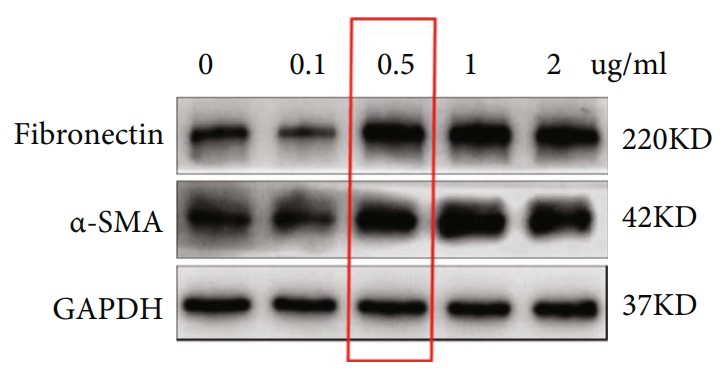
Fig1. L929 cells were treated with rS100A4 at different concentrations, and the protein levels of α-SMA and fibronectin were assessed via western blotting.
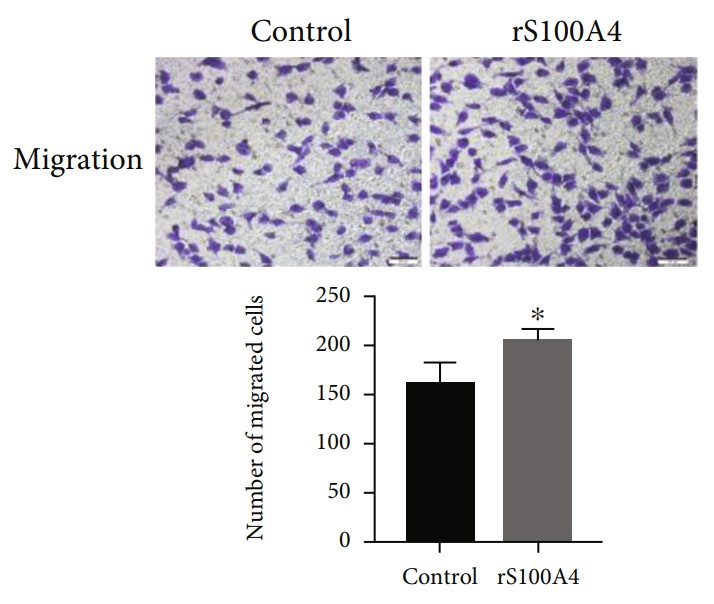
Case study 2: Anfei Liu, 2023
Lung metastasis is the leading cause of breast cancer-related death. The tumor microenvironment contributes to the metastatic colonization of tumor cells in the lungs. Tumor secretory factors are important mediators for the adaptation of cancer cells to foreign microenvironments. Here, the researchers report that tumor-secreted stanniocalcin 1 (STC1) promotes the pulmonary metastasis of breast cancer by enhancing the invasiveness of tumor cells and promoting angiogenesis and lung fibroblast activation in the metastatic microenvironment. The results show that STC1 modifies the metastatic microenvironment through its autocrine action on breast cancer cells. Specifically, STC1 upregulates the expression of S100 calcium-binding protein A4 (S100A4) by facilitating the phosphorylation of EGFR and ERK signaling in breast cancer cells. S100A4 mediates the effect of STC1 on angiogenesis and lung fibroblasts. Importantly, S100A4 knockdown diminishes STC1-induced lung metastasis of breast cancer. Moreover, activated JNK signaling upregulates STC1 expression in breast cancer cells with lung-tropism.
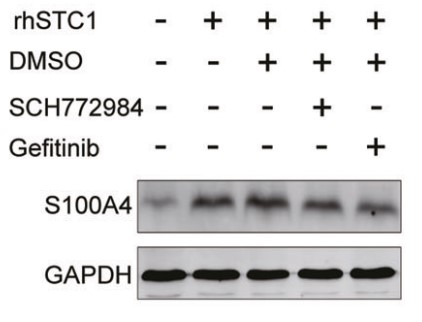
Fig3. Western blot analysis and the quantification of S100A4 of MDA-MB-231 cells with or without 1-h pretreatment with 100 ng/mL of rhSTC1.
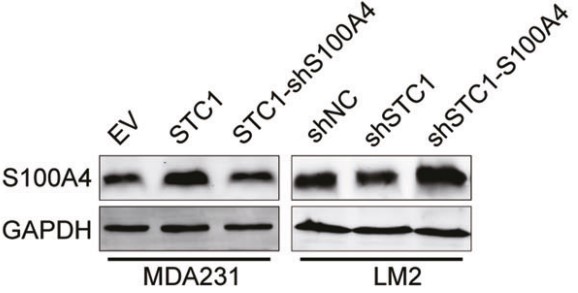
Quality Guarantee
High Purity
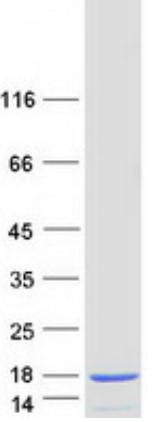
Fig1. SDS-PAGE (S100A4-4590H) (PROTOCOL for western blot)
.
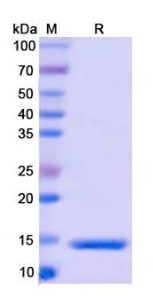
Fig2. SDS-PAGE (S100A4-6215H) (PROTOCOL for western blot)
Involved Pathway
S100A4 involved in several pathways and played different roles in them. We selected most pathways S100A4 participated on our site, such as , which may be useful for your reference. Also, other proteins which involved in the same pathway with S100A4 were listed below. Creative BioMart supplied nearly all the proteins listed, you can search them on our site.
| Pathway Name | Pathway Related Protein |
|---|
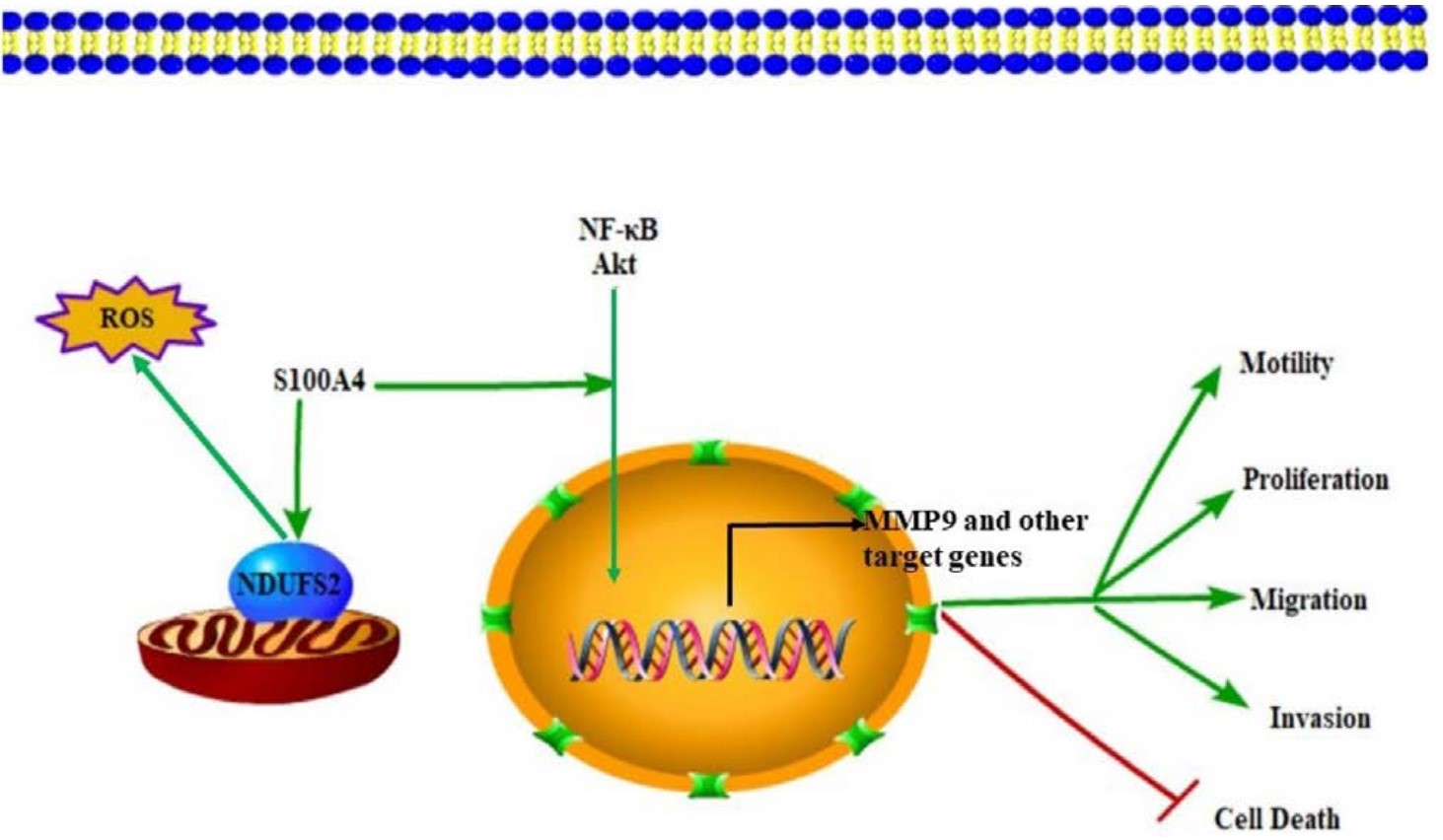
Fig1. S100A4 proteins get involved in NF-kB and AKT signaling, affecting the cell activities. (Ting Wang, 2023)
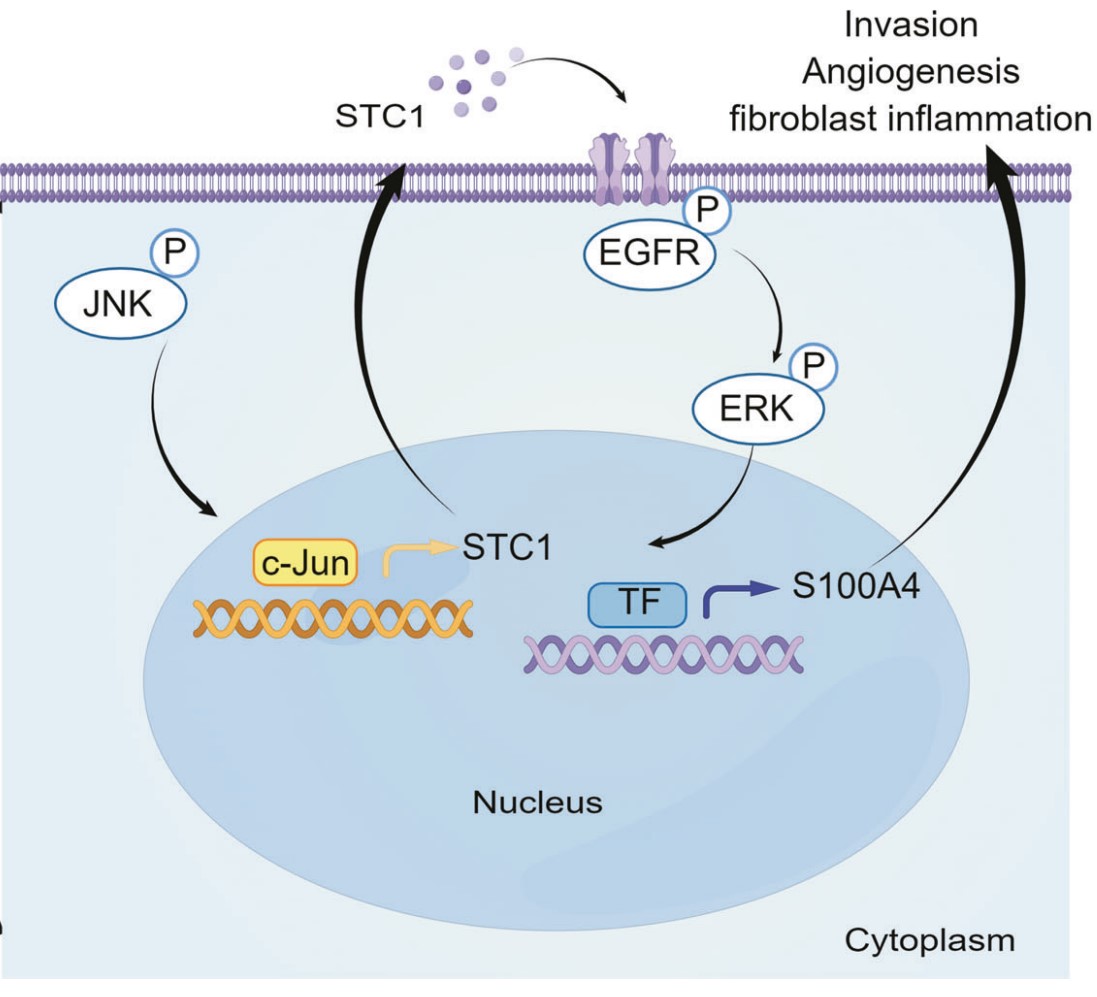
Fig2. Schematic diagram depicting the roles of STC1 in breast cancer pulmonary metastasis. (Anfei Liu, 2023)
Protein Function
S100A4 has several biochemical functions, for example, RAGE receptor binding,actin binding,calcium ion binding. Some of the functions are cooperated with other proteins, some of the functions could acted by S100A4 itself. We selected most functions S100A4 had, and list some proteins which have the same functions with S100A4. You can find most of the proteins on our site.
| Function | Related Protein |
|---|---|
| poly(A) RNA binding | ACTN4,MYO5A,SRRT,RBMX,PPP1R10,NPM3,DIMT1,AKAP8,DHX32,RPS26 |
| protein binding | FBXL3,SRSF2,TRAF3IP1,PKD1L3,FGR,EEF1A2,FSTL3,KCNG3,SMAD4,IGBP1 |
| RAGE receptor binding | S100A7,HMGB2,S100A9,S100A12,S100A13,FPR1,S100A8,S100P,HMGB1,S100B |
| calcium ion binding | CAPN3B,DSG4,ANXA10,PRRG3,AKR1C1,EFCC1,MYL12.2,ITSN2,PCDHB15,KCNIP2 |
| calcium-dependent protein binding | CALM2,CALM1,CLEC4M,CCDC167,ANXA3,SYN1,CASQ2,ANXA11,CD209A,TNNT3 |
| identical protein binding | NISCH,SH3GLB1,CORO1B,DAPK3,P2RX6,ACPP,SDK2,TPRGL,TRIM5,SMN1 |
| actin binding | MYBPC2,ABLIM1A,HIP1RB,MYOT,GMFG,ACTN4,CAPGA,INPPL1B,MPRIP,KLHL33 |
Interacting Protein
S100A4 has direct interactions with proteins and molecules. Those interactions were detected by several methods such as yeast two hybrid, co-IP, pull-down and so on. We selected proteins and molecules interacted with S100A4 here. Most of them are supplied by our site. Hope this information will be useful for your research of S100A4.
TP53;S100B;MDM2;AREGB;BTC
Resources
Research Area
Related Services
Related Products
References
- Grum-Schwensen, B; Klingelhofer, J; et al. S100A4-neutralizing antibody suppresses spontaneous tumor progression, pre-metastatic niche formation and alters T-cell polarization balance. BMC CANCER 15:-(2015).
- Wang, DG; Zhang, JW; et al. Functional expression, characterization and application of the human S100A4 protein. MOLECULAR MEDICINE REPORTS 11:175-181(2015).



